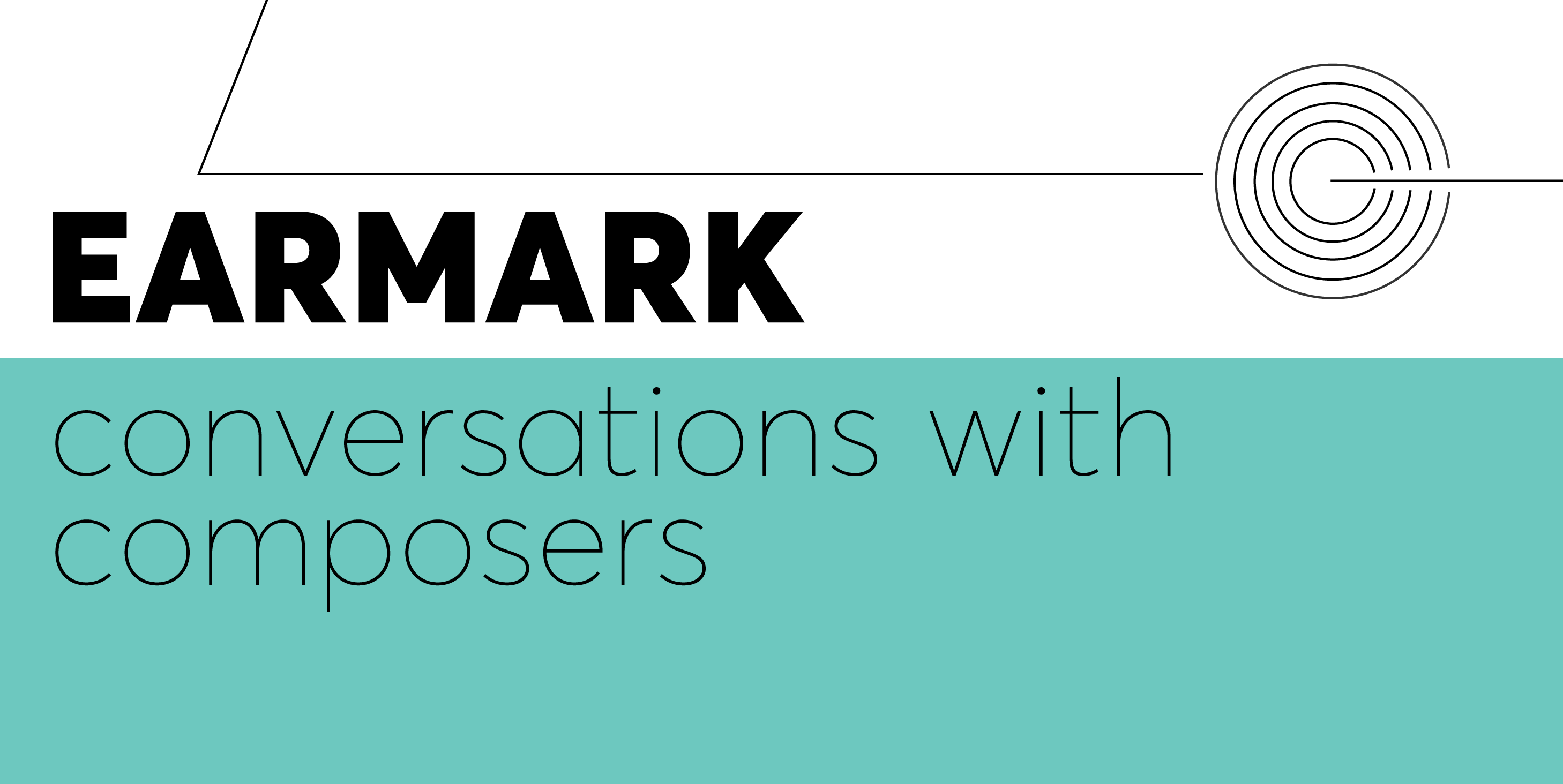By Matthew Fava
It can be a rare thing, a sense of belonging. When you make music there can be equally intense private and collaborative moments, but it is often the act of sharing our creative output that provides the greatest sense of legitimacy and belonging.
We talk more and more at the CMC about the ways we compose—the precise definitions are less important than the assertion of there being many ways to compose, and many resulting identities for composers.
As part of our ongoing Earmark series, we speak with new Associate Composer Jeff Smallman. Over the last few months I have gotten to speak with Jeff about his career in music as a composer and educator, and we invariably drift into notions of belonging and community. I delighted in hearing more in this interview about how he relates to music, and the networks he is connected to.
CMC: What got you excited about music at a young age?
Jeff Smallman: I come from a musical family, so I’ve always been exposed to music. I remember being very young and spending every Saturday at my grandparents’ house with all of my relatives. Everyone (that was old enough) would grab an instrument and start to play. If you didn’t play, you sang. I always thought this was normal. When I got a little older, I started plunking away on my grandparents’ piano, experimenting with sound and finding out what sounded good and what didn’t. That’s when the piano lessons began. Not long after that, I remember reading a Peanuts comic strip where Schroeder talked about Beethoven. I didn’t know who that was, so I asked an aunt—that was the moment my musical world exploded. Most of my family listened to country music, but my aunt loved classical music. When I asked her about Beethoven, she put on an album for me to listen to. It was my first intentional exposure to the orchestra and I couldn’t believe the sounds and colours I was hearing. I knew then that I wanted to be a part of that.
CMC: What was the most important music concert/event you attended?
JS: I’m not sure I know how to answer this one! I think the first live orchestral concert I attended was huge for me. I was probably around 11 years old, and went to a performance of Prokofiev’s Classical Symphony by the Hamilton Symphony Orchestra. (I know there were other pieces on the program but this is the one that sticks with me.) Hearing that music in a real concert hall, and watching the “choreography” of the orchestra, had a giant impact on me.
CMC: What is on your personal playlist?
JS: That probably depends on the day and mood I’m in. I just finished listening to Korngold’s Violin Concerto (awesome piece!). Prokofiev is always a favourite (especially Romeo & Juliet, and Symphonies 1, 5 and 7). Shostakovich and (most of) Stravinsky too. On the other hand, I really like the film music of Danny Elfman and John Williams (most of the time).
CMC: How do you define your musical/artistic community?
JS: Wow, how do I approach this one? My own personal musical community has really been mostly that—community based. Many of my works have been commissioned and/or performed by community groups (geographically), or within defined communities (such as music faculties). On the other hand, I feel that my music has the ability to extend beyond “community” boundaries. It’s been difficult to build a network that facilitates the broader exposure of my works. So my own “community” isn’t too large!
CMC: Is there a project or work of yours that you are particularly proud of.
JS: I tend to be hypercritical of my own work, so sometimes it takes a bit of time for me to be able to look past the “warts” and enjoy what I’ve done. That said, there are a few pieces that I’ve been proud of almost from the very beginning. One of them is my “Sanctus” for a cappella choir (SATB divisi). I had no intention of writing it—it more or less insisted! I’m also very pleased with my ballet score, The Little Matchgirl. It’s an orchestral work, in 10 scenes, lasting approximately 40 minutes. I’m currently trying to find someone willing to take a look at it, either as a ballet or as a concert work.

